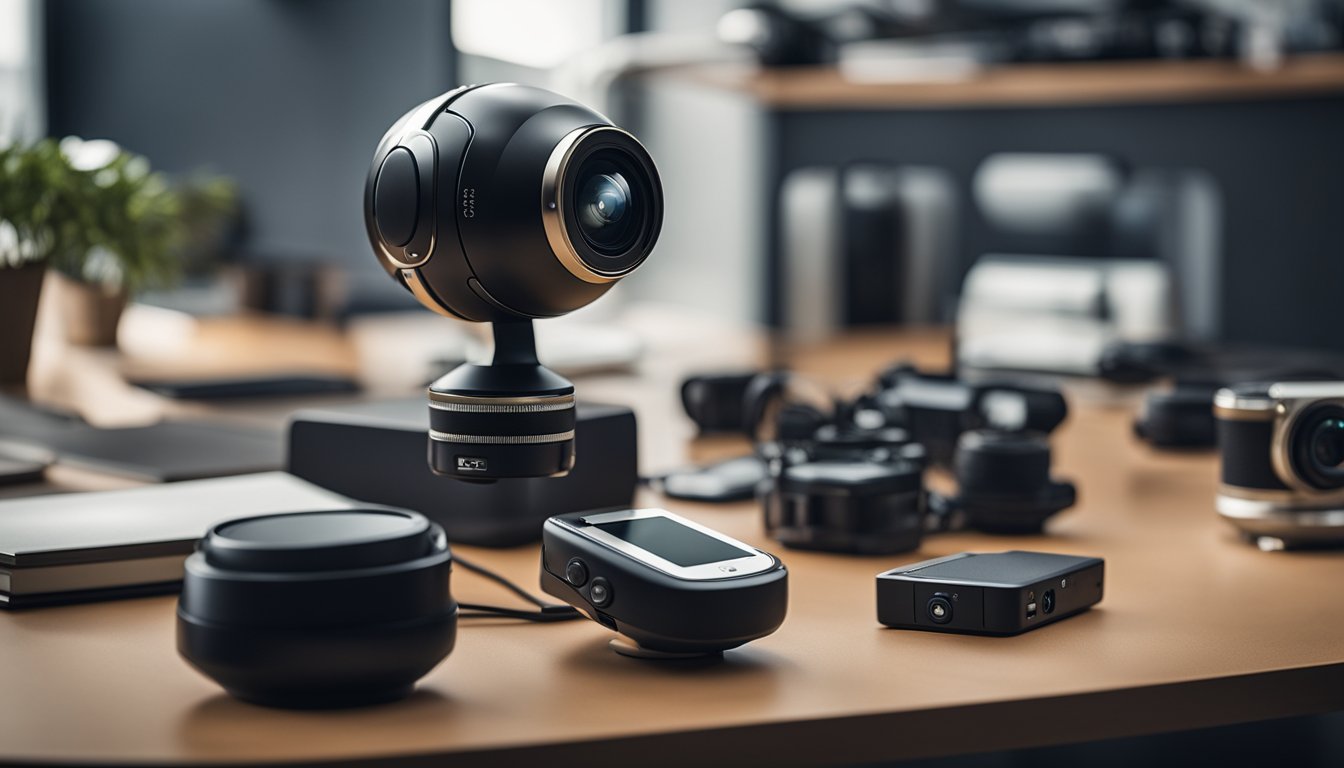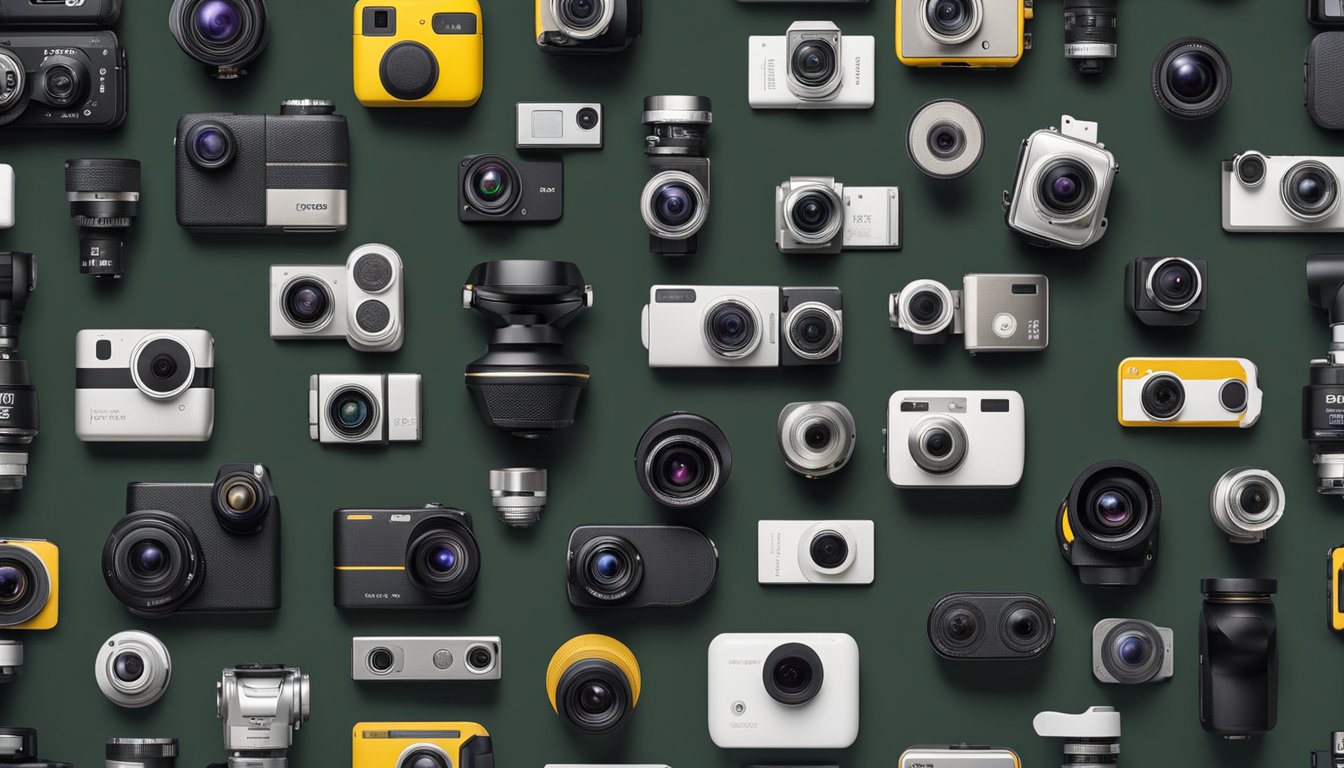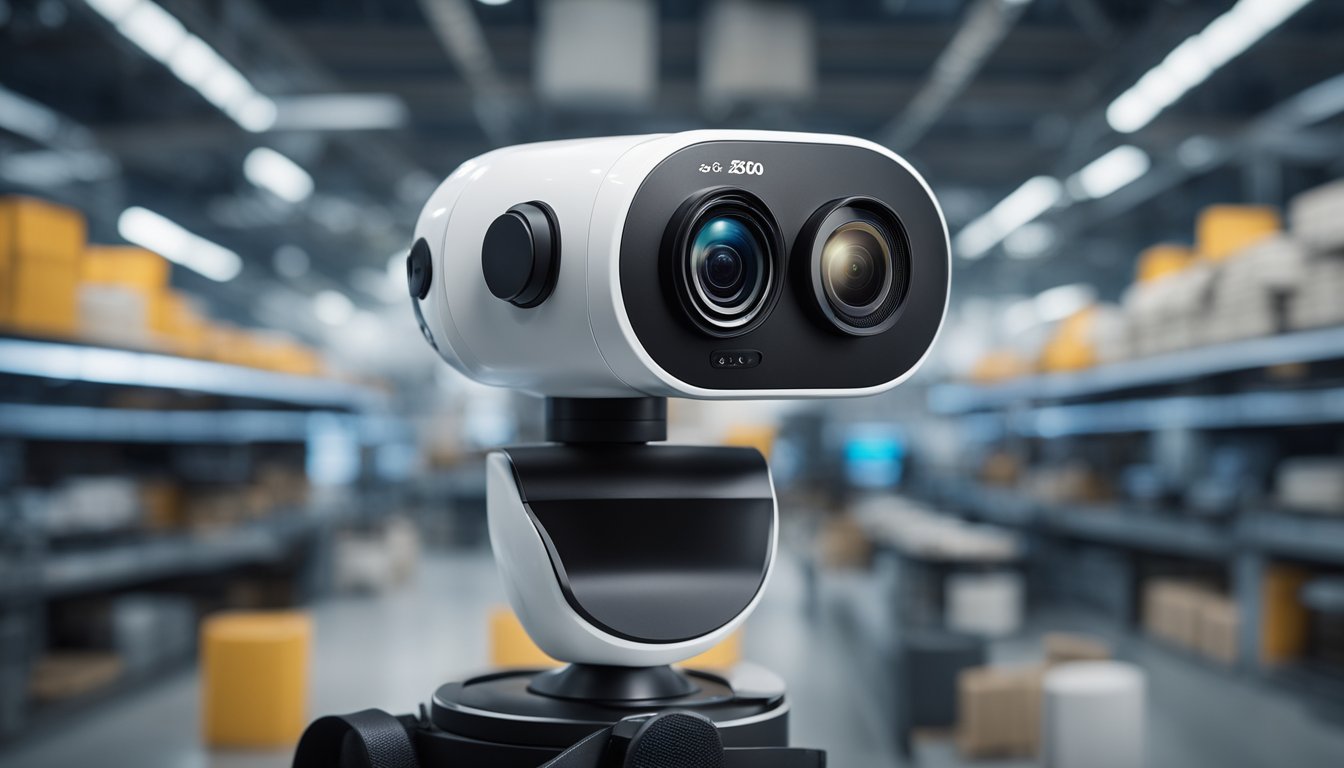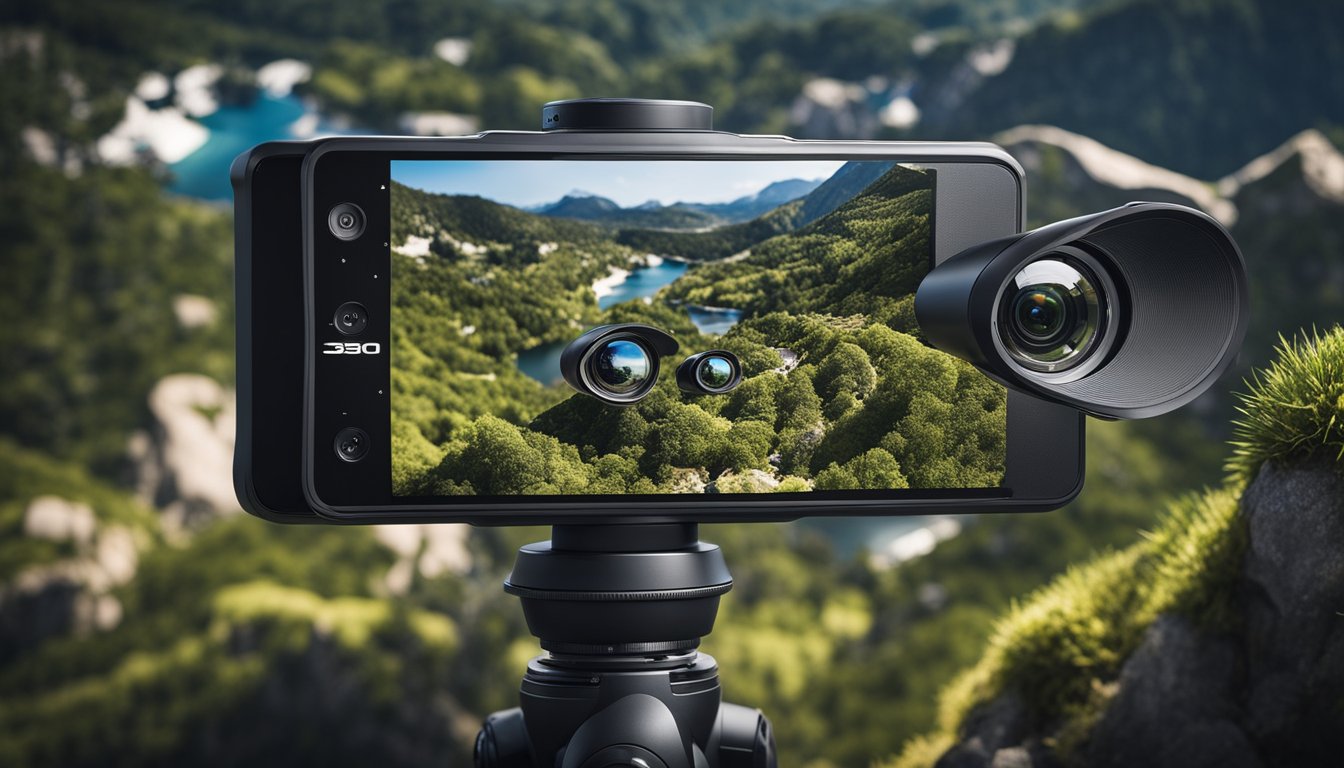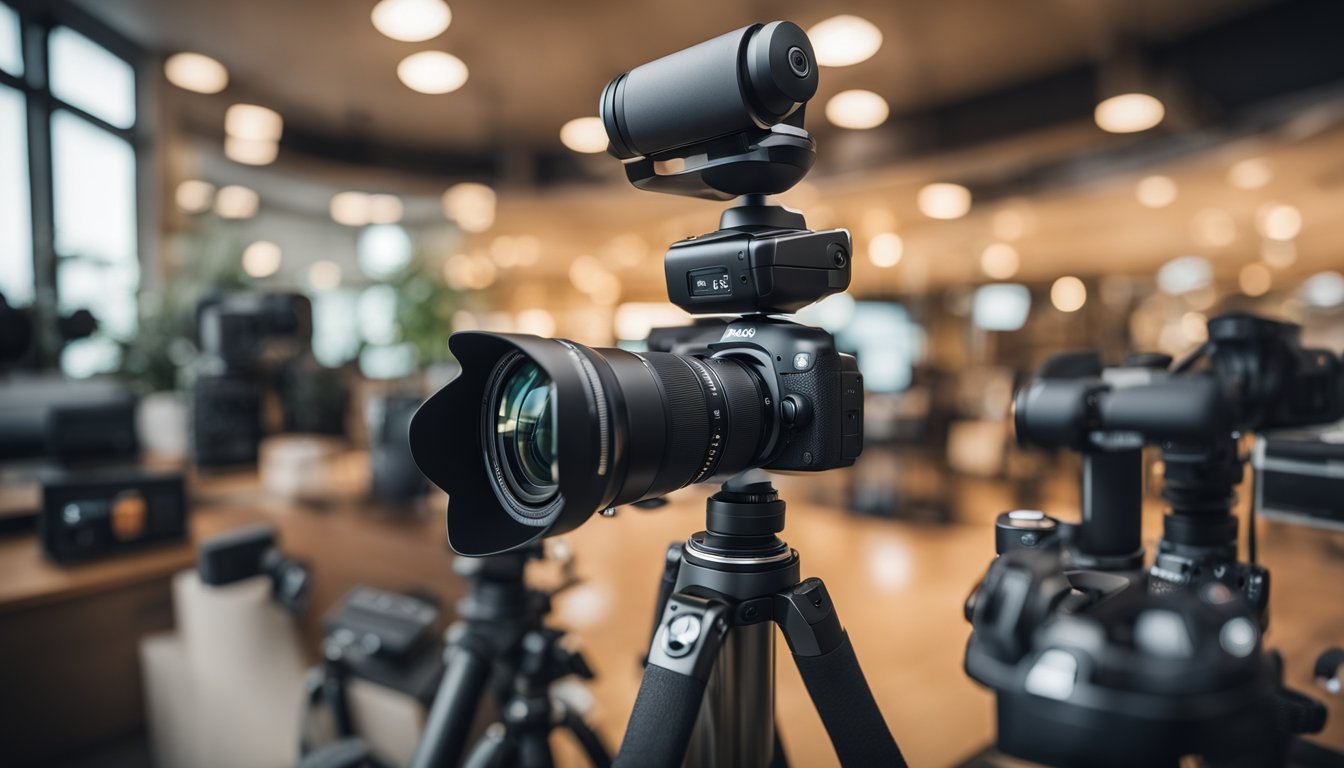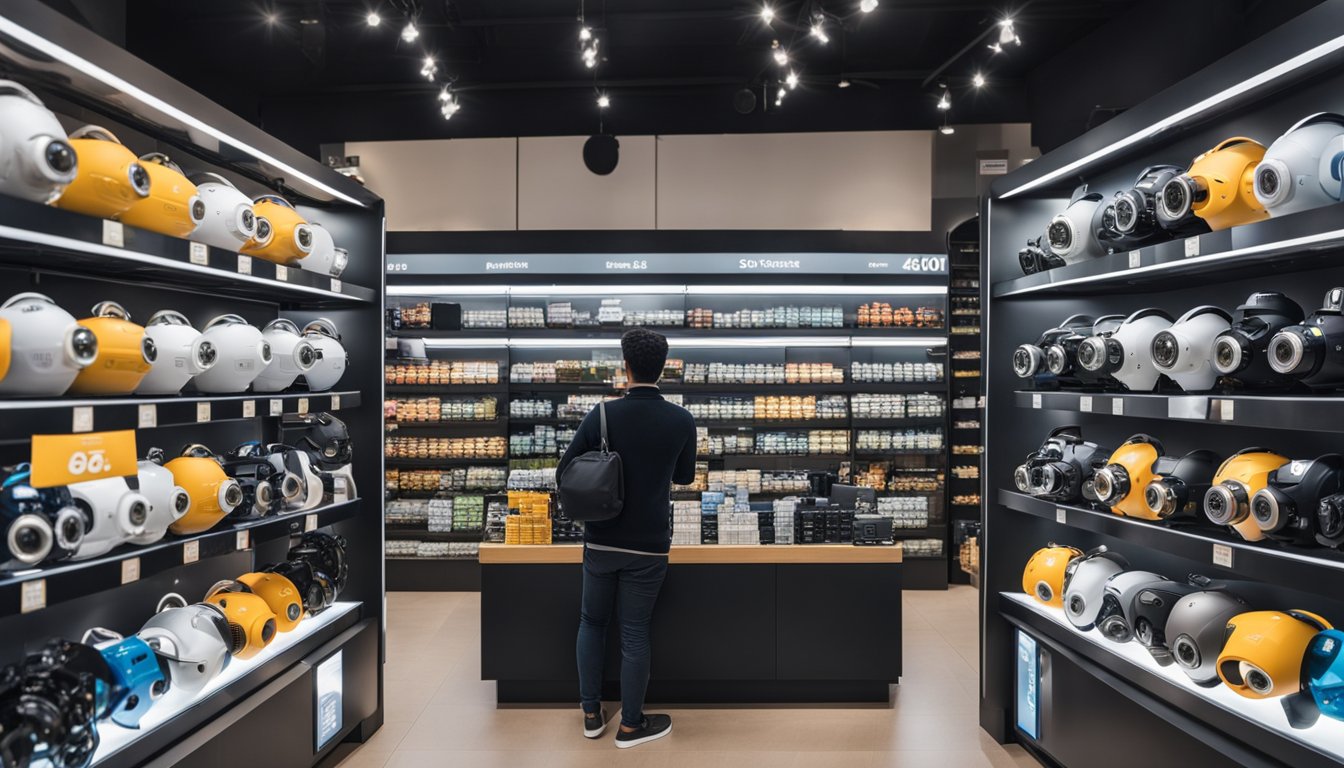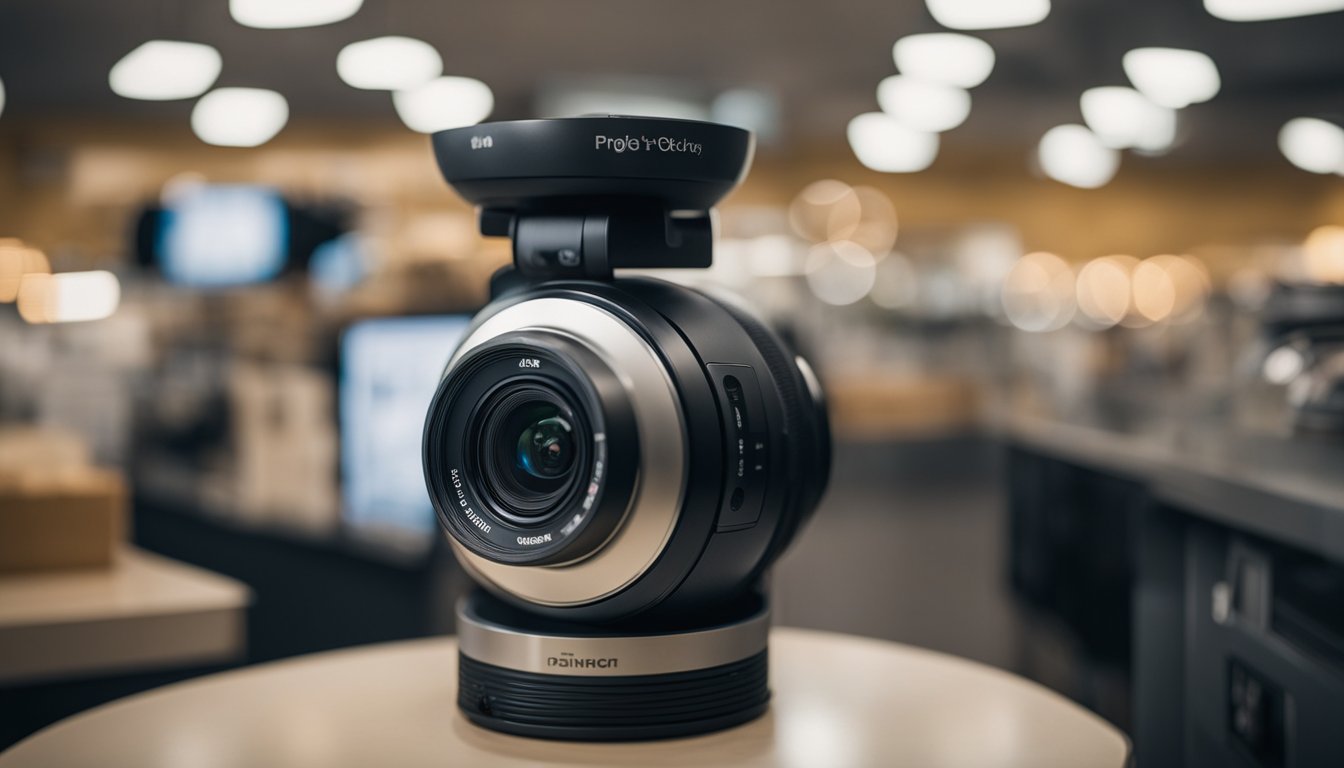If you’re interested in capturing immersive photos and videos, you may be wondering how much a 360-degree camera costs. The answer is that it depends on a variety of factors, including the camera’s features, performance, and brand. In this article, we’ll explore the different types of 360 cameras, the factors that influence their cost, and the price range and affordability of these cameras.
Understanding 360-degree cameras is the first step in determining their cost. These cameras capture a full 360-degree view of the surrounding environment, allowing you to create immersive photos and videos. There are several types of 360 cameras, including single-lens cameras, dual-lens cameras, and multi-lens cameras. Single-lens cameras capture a full 360-degree view with a single lens, while dual-lens cameras use two lenses to capture a full 360-degree view. Multi-lens cameras use multiple lenses to capture a full 360-degree view, which can result in higher-quality photos and videos.
Key Takeaways
- The cost of 360-degree cameras depends on several factors, including the camera’s features, performance, and brand.
- There are several types of 360 cameras, including single-lens, dual-lens, and multi-lens cameras.
- The price range for 360-degree cameras varies widely, from less than $100 to several thousand dollars.
Understanding 360-Degree Cameras
https://www.youtube.com/watch?v=xqWkJJOcU4g&embed=true
What Are 360 Cameras?
360-degree cameras, also known as 360 cameras, are cameras that capture images in a spherical format. This means that they capture everything around them, including above and below the camera. The result is an immersive and interactive image or video that allows the viewer to explore the entire scene.
These cameras use multiple lenses or a single fisheye lens to capture a full 360-degree view of the surroundings. The images or videos captured by these cameras can be viewed on a computer, smartphone, or virtual reality headset.
Key Features of 360 Cameras
When considering a 360 camera, there are some key features to keep in mind. These features will affect the image quality, video quality, and overall performance of the camera.

-
Resolution: The resolution of a 360 camera determines the image and video quality. Higher resolution cameras will produce sharper and more detailed images and videos.
-
Stitching Quality: Stitching is the process of combining multiple images or videos to create a seamless 360-degree view. The stitching quality of a camera affects the final image or video. Poor stitching can result in visible seams or distortion in the image or video.
-
Durability: If you plan on using your 360 camera for outdoor activities or in rugged environments, durability is an important factor to consider. Some cameras are waterproof and shockproof, while others are not.
-
Connectivity: The ability to connect to Wi-Fi or Bluetooth allows you to transfer images and videos to your computer or smartphone quickly. Some cameras also have live streaming capabilities, allowing you to share your 360-degree videos in real-time.
Overall, 360 cameras are a great way to capture immersive and interactive images and videos. With a variety of features and price points, there is a 360 camera for every budget and need.
Types of 360 Cameras
When it comes to 360 cameras, there are two main types: consumer and professional. Each type has its own unique features and price points.
Consumer 360 Cameras
Consumer 360 cameras are designed for casual users who want to capture 360-degree photos and videos without breaking the bank. These cameras are typically compact, easy to use, and priced under $500. Some of the most popular consumer 360 cameras include the Ricoh Theta, Insta360 ONE X, and GoPro MAX.
The Ricoh Theta is a popular choice for beginners because of its simple design and affordable price point. It’s priced at around $300 and can capture 360-degree photos and videos with just one click. The Insta360 ONE X is another popular option, priced at around $400. It features advanced stabilization technology and can shoot 5.7K video. The GoPro MAX is a bit pricier, priced at around $500, but it’s also waterproof and can shoot 360-degree videos at 6K resolution.
Professional 360 Cameras
« How Much Is a 360 Degree Camera? Find Out Here!
How Much Does a 360 Camera Cost: A Quick Guide »
Professional 360 cameras are designed for filmmakers, photographers, and other creative professionals who need high-quality, high-resolution 360-degree footage. These cameras are typically larger, more expensive, and offer more advanced features than consumer cameras. Some of the most popular professional 360 cameras include the Kandao Obsidian, Insta360 Pro 2, and GoPro Omni.
The Kandao Obsidian is a high-end 360 camera that’s priced at around $10,000. It features six lenses and can capture 8K resolution footage at 30 frames per second. The Insta360 Pro 2 is another popular choice, priced at around $5,000. It features six lenses and can capture 8K resolution footage at 30 frames per second. The GoPro Omni is a bit older, but still popular among professionals. It features six GoPro cameras and can capture 8K resolution footage at 30 frames per second. It’s priced at around $5,000.
Whether you’re a casual user or a professional, there’s a 360 camera out there that’s perfect for you. Just be sure to do your research and choose a camera that fits your needs and budget.
Factors Influencing Cost
When it comes to buying a 360-degree camera, the cost can vary greatly depending on a number of factors. In this section, we will discuss some of the main factors that influence the cost of a 360-degree camera.
Camera Design
The design of the camera is one of the most important factors that influence the cost of a 360-degree camera. The design can vary greatly depending on the manufacturer and the intended use of the camera. Some cameras are designed for professional use and have a more rugged design, while others are designed for casual use and have a more sleek and lightweight design.
Resolution and Image Quality
The resolution and image quality of a 360-degree camera are also important factors that influence the cost. Higher resolution cameras tend to be more expensive, but they also produce higher-quality images and videos. The lens quality is also an important factor to consider when it comes to image quality. A higher quality lens will produce sharper and more detailed images.
When it comes to buying a 360-degree camera, it’s important to consider these factors to ensure that you get the best camera for your needs. While cost is an important factor, it’s also important to consider the quality of the camera and the features that it offers. By doing your research and comparing different cameras, you can find the best camera for your needs at a price that fits your budget.
Price Range and Affordability
https://www.youtube.com/watch?v=FqeZGKZfcK8&embed=true
When it comes to 360-degree cameras, there are options available for every budget. In this section, we will discuss the price range of 360-degree cameras and their affordability.
Budget-Friendly Options
If you are looking for an affordable 360-degree camera, you can find some great options that won’t break the bank. The cost of these cameras ranges from $100 to $300. These cameras are perfect for beginners who want to try out 360-degree photography or videography without investing too much money.
Some budget-friendly options include the Insta360 ONE X2, Ricoh Theta SC2, and the GoPro MAX. These cameras offer great features such as 4K video, image stabilization, and waterproofing.
High-End Cameras
If you are a professional photographer or videographer, you may need a high-end 360-degree camera that offers advanced features. These cameras can cost anywhere from $500 to $1000 or more. These cameras are perfect for professionals who need high-quality footage for their work.
Some high-end cameras include the Insta360 Pro 2, GoPro Fusion, and the Kandao Obsidian. These cameras offer features such as 8K video, live streaming, and advanced image stabilization.
When it comes to the price range of 360-degree cameras, there is an option available for every budget. Whether you are a beginner or a professional, you can find a camera that fits your needs and budget.
Camera Features and Performance
When it comes to 360-degree cameras, there are a variety of features and performance factors to consider. Two key factors are stabilization and image stitching, and low-light performance and HDR.
Stabilization and Image Stitching
Stabilization technology is crucial for capturing smooth and steady footage with a 360-degree camera. Some cameras use hardware stabilization, while others rely on software stabilization. Hardware stabilization typically produces better results, but software stabilization can be effective as well.
Image stitching is another important factor to consider. This refers to how well the camera can combine multiple images into a seamless 360-degree image. Cameras with better image stitching will produce higher quality images with fewer visible seams.
Low-Light Performance and HDR
Low-light performance is also an important consideration for 360-degree cameras. Cameras with larger sensors and wider apertures will generally perform better in low-light conditions. Some cameras also have built-in LED lights to help illuminate dark scenes.
HDR (High Dynamic Range) is another feature to look for in a 360-degree camera. This feature allows the camera to capture a wider range of brightness levels, resulting in more detail in both bright and dark areas of the image.
Overall, when choosing a 360-degree camera, it’s important to consider factors such as stabilization and image stitching, low-light performance, and HDR. By doing so, you can ensure that you get a camera that meets your needs and produces high-quality footage.
Software and Editing
https://www.youtube.com/watch?v=XgxW7y3Wh4g&embed=true
When it comes to editing 360-degree videos, you need specialized software to get the job done. Fortunately, there are many editing programs available that can help you create stunning 360-degree videos.
Editing Software
One of the most popular 360-degree video editing software is Pinnacle Studio. This program offers a range of features, including the ability to add text, music, and special effects to your videos. Pinnacle Studio also offers 360-degree video editing tools, but only in the Ultimate plan.
Another great editing software is HitFilm Express. This program is free and offers a range of features, including the ability to edit and convert classical videos to 360-degree mode. HitFilm Express also supports video export of 4K 60fps, which is great for producing high-quality videos.
Live Streaming Capabilities
If you want to live stream your 360-degree videos, you need a camera that supports live streaming and software that can handle it. One of the best cameras for live streaming is the Insta360 ONE R. This camera offers 360-degree live streaming capabilities and can be used with the Insta360 app to stream directly to social media platforms.
When it comes to software, there are many options available. One of the most popular is OBS Studio, which is free and open-source. OBS Studio is a powerful software that can handle live streaming and video recording. It also offers a range of features, including the ability to add text, images, and special effects to your videos.
In conclusion, editing 360-degree videos requires specialized software that can handle the unique challenges of this type of video. Whether you’re editing your videos or live streaming them, there are plenty of options available to help you create stunning 360-degree videos.
Use Cases for 360 Cameras
https://www.youtube.com/watch?v=UJ67x8ur8dA&embed=true
360 cameras have become increasingly popular in recent years, thanks to their ability to capture immersive and interactive content. Here are a few use cases for 360 cameras:
Adventure and Action
If you’re into adventure and action sports, a 360 camera can be a great way to capture your experiences in a unique way. You can attach a 360 camera to your helmet, bike, or other equipment to capture stunning footage of your adventures. With a 360 camera, you can capture the entire scene around you, giving viewers a sense of what it’s like to be in the middle of the action.
Real Estate and Virtual Tours
360 cameras are also great for real estate and virtual tours. With a 360 camera, you can create immersive virtual tours of properties, allowing potential buyers to get a sense of what it’s like to be inside a property without actually being there. You can also use a 360 camera to capture stunning photos and videos of properties, giving potential buyers a more detailed view of the property.
Overall, 360 cameras are a great tool for content creation, whether you’re into action and adventure or real estate and virtual tours. With a 360 camera, you can capture stunning photos and videos that are sure to impress your audience.
Accessories and Additional Features
When buying a 360-degree camera, you should also consider purchasing additional accessories to enhance your experience. Some cameras come with accessories such as a tripod, but you may want to invest in extra lenses or a longer-lasting battery.
Extra Lenses and Battery Life
Extra lenses can help improve the quality of your photos and videos. Some 360-degree cameras have interchangeable lenses, allowing you to switch between fisheye and wide-angle lenses. This can be especially useful for capturing different types of shots. Additionally, a longer-lasting battery can be helpful if you plan on taking your camera on long trips or if you don’t want to worry about running out of power during a shoot.
Durability and Water Resistance
If you plan on using your 360-degree camera in rugged environments or near water, you may want to consider a camera with added durability and water resistance. Some cameras are built to withstand drops, impacts, and extreme temperatures, making them ideal for outdoor adventures. Others are designed to be waterproof, allowing you to take photos and videos underwater.
When considering accessories and additional features, keep in mind your personal needs and the type of photography or videography you plan on doing. Some accessories may be unnecessary for your purposes, while others may be essential. Take the time to research and compare different options to find the best fit for you and your camera.
Shopping for 360 Cameras
Are you interested in buying a 360 camera? These cameras can capture stunning 360-degree photos and videos, allowing you to relive your favorite moments in an immersive way. But before you make a purchase, it’s important to know where to buy and how much they cost. In this section, we’ll cover everything you need to know about shopping for 360 cameras.
Where to Buy
You can find 360 cameras at a variety of retailers, both online and in-store. Some of the most popular options include Best Buy, Amazon, and B&H Photo. You can also check out the websites of camera manufacturers like GoPro and Insta360 to see their latest offerings.
When shopping for a 360 camera, it’s important to consider factors like price, features, and customer reviews. Keep in mind that some retailers may offer exclusive deals or bundles that can save you money.
Comparing Prices and Reviews
The cost of 360 cameras can vary widely depending on the brand, model, and features. Some entry-level models may cost as little as $100, while high-end options can cost upwards of $1,000 or more. When comparing prices, be sure to look at the features included with each camera to determine which one offers the best value for your needs.
In addition to price, it’s also important to read customer reviews to get a sense of each camera’s performance and reliability. Look for cameras with high ratings and positive reviews from customers who have used them for similar purposes. You can also check out professional reviews from websites like PCMag to get an expert opinion on the best 360 cameras on the market.
By shopping around and comparing prices and reviews, you can find the perfect 360 camera to capture all of your favorite memories in stunning detail.
Future of 360 Cameras
https://www.youtube.com/watch?v=i8EUerX90-0&embed=true
360-degree cameras are rapidly evolving and becoming more accessible to the average consumer. With new emerging technologies and trends in 360 photography, the future of 360 cameras looks bright. In this section, we will discuss the future of 360 cameras and what we can expect in the coming years.
Emerging Technologies
One of the most exciting emerging technologies in 360 cameras is the integration of 3D technology. This technology allows for a more immersive experience by adding depth to the images and videos captured by the camera. With 3D technology, you can create a more realistic and interactive experience for your audience.
Another emerging technology in 360 cameras is the development of advanced features. These features include image stabilization, live streaming, and high dynamic range (HDR) imaging. These features allow for more creativity and flexibility in capturing and sharing 360-degree content.
Trends in 360 Photography
As the cost of 360 cameras continues to decrease, more and more people are getting involved in 360 photography. This has led to an increase in creativity and innovation in the field. With 360-degree cameras, you can capture unique perspectives and create immersive experiences that were not possible before.
One trend in 360 photography is the use of 360-degree cameras for virtual tours. This is particularly useful for real estate agents and businesses looking to showcase their properties. Virtual tours allow potential buyers to get a better sense of the space and make more informed decisions.
Another trend in 360 photography is the use of 360-degree cameras for immersive storytelling. This includes the use of virtual reality (VR) headsets to create a more immersive experience for the viewer. With 360-degree cameras, you can create compelling stories that transport your audience to different worlds and experiences.
In conclusion, the future of 360 cameras looks bright with new emerging technologies and trends in 360 photography. As the cost of 360 cameras continues to decrease, we can expect to see more creativity and innovation in the field. With 3D technology and advanced features, you can create more immersive experiences for your audience.
Frequently Asked Questions
What’s the price range for a high-quality 360 camera?
The price range for a high-quality 360-degree camera varies depending on the features and specifications. A good quality 360-degree camera can range from $200 to $1000. The higher-end models offer features such as higher resolution, better image stabilization, and more lenses.
Can you give me an idea of the cost for a 360 degree security camera setup?
A 360-degree security camera setup can be expensive, depending on the number of cameras and features you require. A basic setup with one or two cameras can cost around $500, while a more advanced setup with multiple cameras and advanced features can cost upwards of $1000.
How much would I spend on a 360 camera suited for action shots?
A 360-degree camera suited for action shots can range from $200 to $800, depending on the features and specifications. A good action camera should offer features such as waterproofing, image stabilization, and high-quality video recording.
What is the investment for a 360 degree camera designed for home use?
A 360-degree camera designed for home use can cost between $200 and $600, depending on the features and specifications. A good quality home use 360-degree camera should offer features such as easy connectivity with mobile devices, high-quality video recording, and good image stabilization.
What’s the typical cost for a 360 camera that’s great for virtual tours?
A 360-degree camera that’s great for virtual tours can cost between $200 and $1000, depending on the features and specifications. A good quality virtual tour 360-degree camera should offer features such as high-resolution images, easy connectivity with mobile devices, and good image stabilization.
What are the expenses involved in getting a 360-degree camera for real estate photography?
A 360-degree camera for real estate photography can cost between $200 and $1000, depending on the features and specifications. In addition to the camera, you may need to invest in accessories such as tripods, lighting, and editing software. The total investment can vary depending on your specific needs and requirements.

